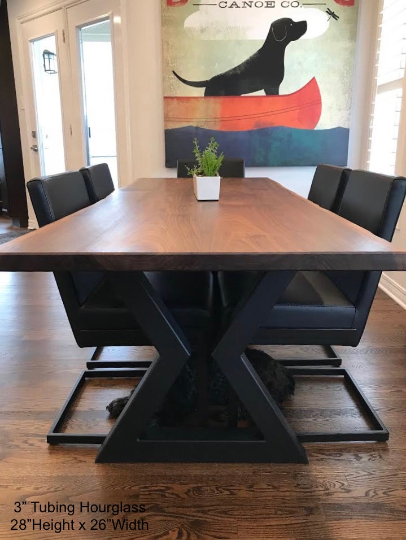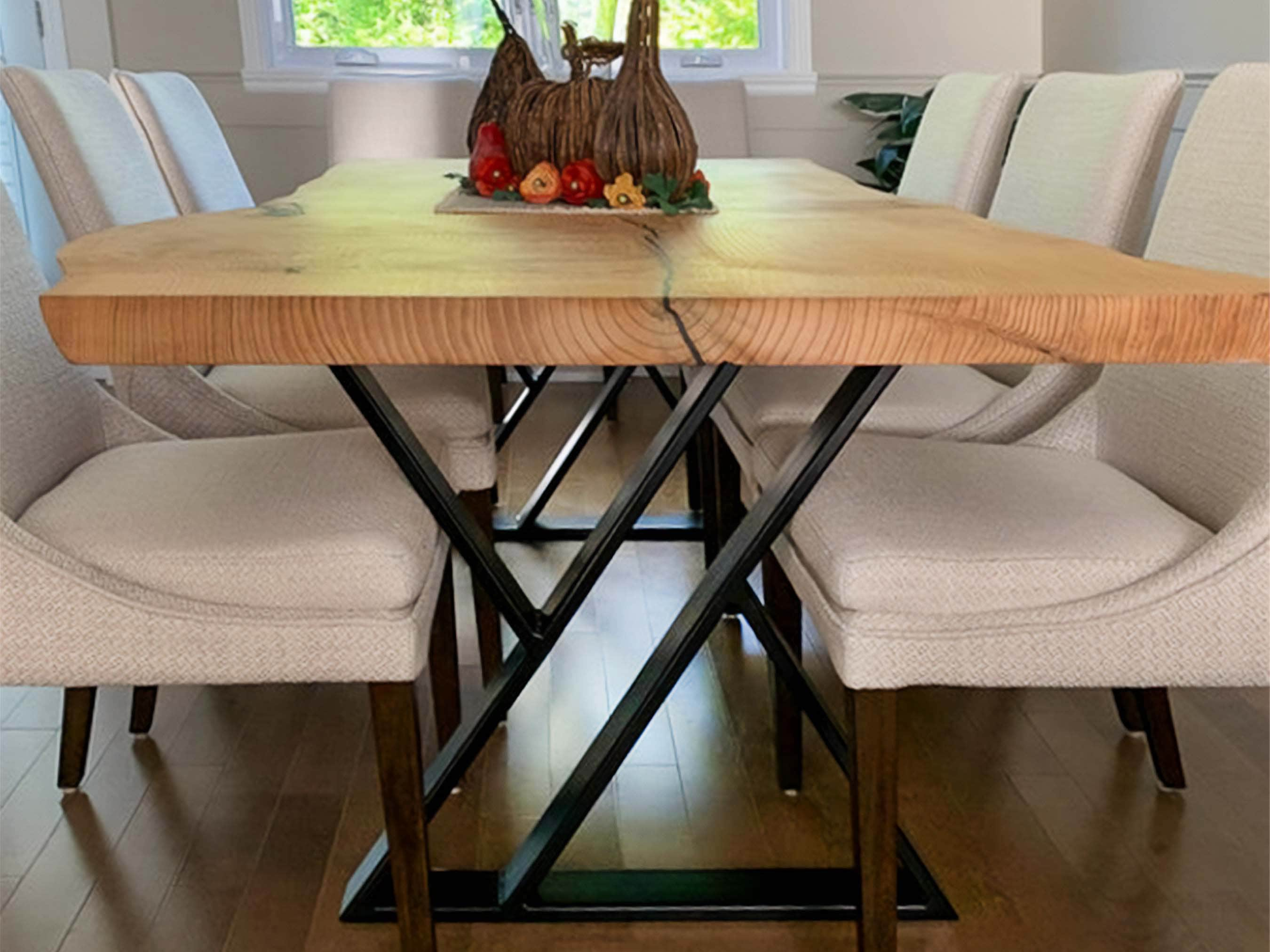Add Charm and Elegance to Your Space with Distinct Dining Room Table Legs
Add Charm and Elegance to Your Space with Distinct Dining Room Table Legs
Blog Article
From Conventional to Modern: Discover the Ideal Eating Space Table Legs for Your Style
The choice of dining space table legs plays a pivotal function in defining the overall personality of your area, linking the space in between conventional workmanship and modern-day appearances. While timeless layouts such as cabriole and transformed legs stimulate a feeling of ageless class, modern styles like hairpin and geometric choices provide a possibility for striking aesthetic interest. Examining the right equilibrium between these designs requires a nuanced understanding of your existing decor and individual taste. As you take into consideration these components, the inquiry stays: just how can you seamlessly incorporate these diverse leg designs to create a harmonious dining experience?
Recognizing Table Leg Styles
The selection of dining-room table leg styles can significantly affect both the aesthetics and performance of the room. Each leg style contributes special useful functions and aesthetic components, accommodating varied design preferences and usage demands. Recognizing these styles is essential for picking the ideal table that straightens with your overall interior style vision.
For example, conical legs offer a clean, timeless look that can boost a room's style, while pedestal bases provide stability and make the most of legroom, making them ideal for smaller sized spaces. Hairpin legs, a characteristic of mid-century modern-day style, present an industrial style, allowing for an airy, open feeling. In a similar way, trestle legs evoke rustic charm, giving durable support and a sense of timelessness.
Wooden legs can bring warmth and structure, whereas steel options often communicate a smooth, modern ambiance. Eventually, understanding table leg designs is essential for producing a cohesive eating location that mirrors individual style while making certain practicality and convenience.
Traditional Table Leg Options
When selecting eating room table legs, standard choices usually embody ageless sophistication and workmanship. These designs reflect a rich heritage and a dedication to top quality, making them suitable for those that value timeless aesthetics.
Among one of the most famous standard leg styles is the cabriole leg, identified by its graceful bent shape. This layout usually includes ornamental makings and is most frequently found in Queen Anne and Chippendale furnishings. One more preferred option is the transformed leg, which flaunts a collection of smooth, rounded shapes that provide a traditional appearance while preserving stability.
Furthermore, the straight leg, while straightforward, supplies a unadorned and tough framework that can mix seamlessly with a selection of tabletop designs. For those drawn to ornate outlining, claw-and-ball feet legs stimulate a feeling of grandeur and can function as a spectacular prime focus in any eating room.
Finally, pedestal bases, although not purely legs, offer a different standard alternative that enables for ample legroom and can be perfectly carved. Each of these typical leg designs contributes to the general ambiance of a dining-room, marrying feature with visual appeal.

Modern Table Leg Styles
Modern table leg designs use a varied range of designs that emphasize ingenious materials and clean lines. These layouts commonly focus on functionality while serving as striking centerpieces within a dining room. Minimalist appearances prevail, with legs crafted from materials such as metal, glass, and engineered wood, which add to a airy and modern feel.
One preferred design is the barrette leg, defined by its slim, tapered framework that provides stability without frustrating the tabletop (dining room table legs). This style is often discovered in mid-century modern-day furniture and can effortlessly enhance numerous eating table forms. An additional trend is using geometric forms, where legs might handle unbalanced or angular forms, adding aesthetic passion and a touch of creativity

Mixing Styles for Special Areas
Frequently, house owners look for to produce one-of-a-kind dining areas that reflect their individual design by mixing numerous layout components. This strategy enables the incorporation of diverse appearances, resulting in an unified yet unique setting. As an example, pairing a rustic wood table with smooth, modern metal legs can produce a distinctive contrast that boosts the space's general appeal.
Additionally, integrating vintage table legs with modern tabletops can stimulate a feeling of background while keeping a contemporary perceptiveness. Such combinations not only showcase individual preference however additionally encourage creative thinking, allowing home owners to curate a room find out that feels both individual and welcoming.
Shade plays an essential role in this blending procedure; choosing table legs that enhance or comparison with the existing color scheme can enhance visual passion. Whitewashed legs can soften the boldness of a dark table surface area, creating a well balanced aesthetic.
Tips for Selecting the Right Legs
Picking the right table legs is important for accomplishing both capability and aesthetic allure in your eating room. Begin by thinking about the overall style of your space. Traditional settings profit from legs that include intricate makings or transformed designs, while modern rooms might require smooth, minimal designs.
Following, assess the height and stability of the legs. dining room table legs. Standard eating tables vary in between 28 to 30 inches in elevation, so make certain the legs enhance this measurement for convenience. Furthermore, robust materials, such as hardwood or steel, can improve stability and long life
Evaluate the leg shape as well-- options include right, tapered, or stand designs. Straight legs provide a classic appearance, while tapered legs can include a touch of elegance. Pedestal bases give adequate legroom and are excellent for smaller spaces.
Verdict
In check my source recap, selecting the excellent dining space table legs needs careful consideration of both standard and modern styles. Traditional options such as cabriole and turned legs supply classic sophistication, while modern styles like barrette and geometric shapes offer a modern touch. By balancing leg style, height, and product with the general design, a natural and inviting environment can be attained. Eventually, the chosen table legs should mirror the preferred aesthetic, boosting the eating experience within the area.
The range of dining room table leg styles can substantially influence both the appearances and capability of the Home Page room. Eventually, understanding table leg designs is crucial for creating a natural dining area that shows personal style while ensuring usefulness and convenience.One of the most famous standard leg styles is the cabriole leg, defined by its elegant curved shape. Straight legs provide a traditional look, while tapered legs can add a touch of beauty.In recap, selecting the suitable eating area table legs needs cautious consideration of both contemporary and typical designs.
Report this page